The Calabria Region of Italy
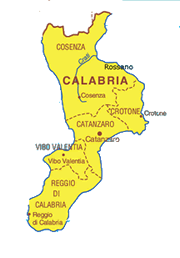
![]() Location: Calabria is the southernmost region of Italy, sometimes referred to as the “toe of the boot”. In antiquity it was known as Bruttium. To the north is the province of Basilicata; Sicily is located south-west, and the west is bounded by the Tyrrhenian Sea and the Ionian Sea is on the eastern boundary.
Location: Calabria is the southernmost region of Italy, sometimes referred to as the “toe of the boot”. In antiquity it was known as Bruttium. To the north is the province of Basilicata; Sicily is located south-west, and the west is bounded by the Tyrrhenian Sea and the Ionian Sea is on the eastern boundary.
Climate: The Calabrian climate is definitely of the Mediterranean type. The eastern coast along the Ionian sea is warmer and dryer than the western Tyrrhenian coast, and is the hottest area on the peninsula. In the central part of the province towards the Sila mountains, various microclimates that promote a wild diversity of vegetation. highly changeable with a few periods of rain and cold weather. In May nature really comes into bloom.
Geography: Calabria is located at the “toe” of the Italian peninsula on a strip of land 240 km long and 32 km wide at its most narrow point. The most unusual thing about Calabria is its exceptionally rugged geography. Looking at its position on the map, you expect an arid, desert-like southern state; but the Apennine mountains extend all the way down the Italian peninsula and out onto Sicily. The mountains seem to be bunched up like a sock in the toe of the Italian boot. 90% of its territory is mountainous and its highest peak is Serra Dolcedorme, part of the Pollino massif (2,267 m): the coastline measures 800 km. 10% of all the land surface in Calabria can be called “plains,” and the center of the region is dominated by a thickly forested range known as the Sila.
History: Calabria is one of the oldest regions of Italy. The first evidence of human habitation dates as far back as 700,000BC. Around 3500 BC the first villages in Calabria appeared. By the eighth century BC, Calabria became a very important area for Magna Grecia under Greek control. It was later conquered by the Romans in the second century BC, and after the collapse of the Roman Empire the region was dominated by the Goths, the Byzantines and later the Longobards around the ninth century BC.
In the early tenth century the Byzantines again controlled the region and expanded the existing monarchy thus helping to reunite the region. The Normans and Swedes also tried to rule Calabria around the twelfth century BC. Calabria was made whole and became part of the larger region of Italy around 1860. Today Calabria is an important southern Italian province.
Culture: The culture of Calabria became richer and more diverse with each new invasion. The invasive influence impacted the foods, cooking style, artistic expression, architecture, religious doctrine and formed thinking of the people of Calabria. The culture was felt differently depending on which area of the region we are examining. The Greeks and Saracens heavily influenced Southern areas while in the northern areas there was a decided Spanish influence.
Today’s influx of immigrants from northern Africa and Albania, assure that the culture continues to evolve.
The Calabrese people are noted for being exceptionally hospitable, yet extremely stubborn, or “capotosto”(hard headed), as we prefer to say.
Travel by Air: For those travelers who prefer to fly to Calabria, the region is serviced by three airports: Reggio Calabria’s Aeroporto dello Stretto( Tito Minniti), the Sant’Anna Airport in Crotone and Lamezia Terme International Airport(SUF-below right). Flying into Lamezia Terme offers the best deals and most convenient times offering daily flights to and from all major Italian destinations, and some international ones too. Wherever you’re flying from, search for flights on aggregator websites like Kayak.com, Skyscanner and Google Flights.
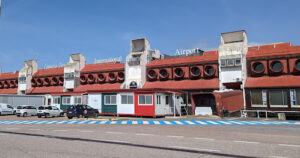
These sites search for deals across multiple websites and give you all the results in one place, organized by fare. Lamezia Terme International Airport on the Tyrrhenian sea is just 45 minutes from Soverato on the Ionian sea. Try several aggregator sites before you book in order to score the cheapest and most convenient option. Keep in mind that Ryanair is a very popular and cost-effective airline that offers flights directly to Reggio Calabria, the region’s biggest city. Also check out Easyjet.com, and Swiss.com, or the new Italian airline, ITA.
Aeroporto dello Stretto Tito Minniti (Airport Code REG. – below right) is about 3.5 miles south of Reggio Calabria’s historic city center at the very tip of the boot. It was named after Italian Royal Air Force war-hero Tito Minniti, who was born in Reggio Calabria.
It is accessible by domestic flights from many Italian cities including Milan, Rome, Florence, and Venice, and is a full service airport with a bank, major car rental companies, restaurants, bar, VIP lounges, boutiques, aerotaxi and more.
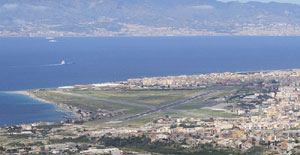
Sant’Anna Airport in Crotone (Airport code CRV – below right) is a small airport features one two-story passenger terminal building and a single runway. The terminal’s main floor features the arrivals and departures areas as well as some basic passenger facilities while the upper level contains administration offices.[2] The apron features three stands for mid-sized aircraft such as the Boeing 737-800 directly in front of the terminal building which are used by walk-boarding as well as four more bus-boarding stands to the north of the terminal. Look to fly to Crotone from Bergamo, Bologna and Treviso on Ryanair and from Rome-Fiumicino on Sky Alps airline.
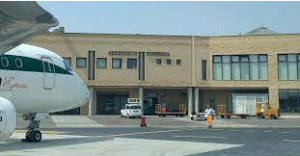
Travel by Train or Car: The A3 (Naples-Reggio Calabria) is the only highway in Italy that is toll freebetween Salerno and Reggio Calabria! It is a wonderful drive which can also be made along the strada statale(state road) which follows the sea, just exit the autostrada A3 at Praia A Mare and proceed to ss18 which goes along the coastline all the way to Reggio Calabria. Here you will experience breathtaking views of the marvelous Tyrrhenian sea. Cars can be rented in any airport or big city. While driving offers maximum convenience be prepared for great expense.
Travel by train from the north to the south of Italy has grown up over the last five years. Italian trains are fast, comfortable, clean and economic. For example, one can travel from Florence to Vibo Valentia-Pizzo (a southern Calabrian town) in six hours without changing trains for an approximate cost of $75 one way. This depends on the day, time and season. Italo trains travel from Milan to Reggio Calabria in about 10 hours, costing approximately $88 one way, as well as to many other destinations. . FrecciaRosso and FrecciaArgento offer numerous itineraries throughout all of Italy at convenient times and places. While planes may be faster, trains are more convenient, comfortable and allow much more luggage, as well as offering dining cars, free WiFi and snacks. 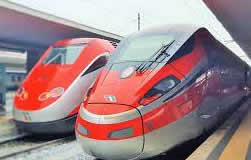
Train travel is available throughout Italy, even to the most remote destinations. For more information, visit italotreno.it or trenitalia.com.

![]()
Calabria’s coastline is exceptional in that it consists of breathtaking, “mozzafiato as they say in Italy”, beaches on three sides of the Tyrrhenian and Ionian Seas. The many beaches, one more beautiful than the next, are pristine; the waters are clear like crystals with a background of picturesque cliffs. There are many characteristic fishing villages and inviting seaside towns to visit along the coastline. This coastline is called the Costa degli Dei, i.e. the Coast of the Gods and is a must-see destination.
Calabria covers a large territory and there are numerous places to savor and visit including those listed below, and too many more to highlight.
The Sanctuario di Santa Maria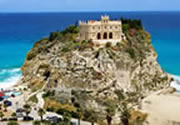 dell’Isola di Tropea. It is surrounded by the turquoise Tyrrhenian Sea located in the town of Tropea. It’s history is unknown, but sometime during the early Middle Ages it came under the rule of the Eastern rite, Basilian monks and then passed to the Benedictines and later to the Abbey of Montecassino for over a 1,000 years. Little is known of its original construction, but there is a legend.
dell’Isola di Tropea. It is surrounded by the turquoise Tyrrhenian Sea located in the town of Tropea. It’s history is unknown, but sometime during the early Middle Ages it came under the rule of the Eastern rite, Basilian monks and then passed to the Benedictines and later to the Abbey of Montecassino for over a 1,000 years. Little is known of its original construction, but there is a legend.
“In a time when religious idols were being destroyed, a wooden statue of the Madonna washed up on the shore near Tropea. The town’s Bishop and Mayor decided to place her in a natural rock grotto, but she was too tall. They tried to saw off her legs, but the carpenter became paralyzed when he touched the wood and the mayor and the Bishop died. Later she performed many miracles”. Her annual festival is celebrated on August 15th when the statue returns to the island in a boat with Joseph and baby Jesus.
Due to devastating earthquakes in 1783 and 1905 not much of the original structure remains. Even so, Santa Maria dell’Isola is one of Calabria’s most famous symbols.
Chianalea
Chianalea di Scilla is a fascinating fishing village nestled in the the Tyrrhenian Sea. Historically the village can be traced to the ancient Greeks who established many colonies along the coast. Over the centuries, Chianalea became a significant maritime hub, surviving the rise and fall of various civilizations, including the Romans and Byzantines.
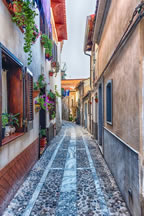 Chianalea is a true pearl that lies at the heart of Scilla and is often called one of the most beautiful towns in Italy. Its name seems to have originated from the Greek term, “Kiana-Lea”, which means “new wave” capturing its coastal characteristics and marine importance.
Chianalea is a true pearl that lies at the heart of Scilla and is often called one of the most beautiful towns in Italy. Its name seems to have originated from the Greek term, “Kiana-Lea”, which means “new wave” capturing its coastal characteristics and marine importance.
It is often called “the little Venice” because of its labyrinth-like streets, its picturesque fishing boats and distinctive maritime architecture, not to mention fantastic restaurants.
Capo Vaticano
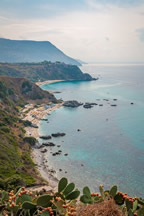 Apparently Capo Vaticano, made from grey and white granite, is one of the most ancient formations in the Mediterranean basin. Some consider it to be a Roman hill and, in ancient times, it was considered a sacred place known all over the Magna Grecia because of a rock 200 meters off the coast called “Il Mantineo” from which a prophetess Manto worked the oracle.
Apparently Capo Vaticano, made from grey and white granite, is one of the most ancient formations in the Mediterranean basin. Some consider it to be a Roman hill and, in ancient times, it was considered a sacred place known all over the Magna Grecia because of a rock 200 meters off the coast called “Il Mantineo” from which a prophetess Manto worked the oracle.
The Cape is 124 meters above sea level starting from Tano Bay stretching to Virgin Mary Bay. Groticelle Bay is the most famous and has the most beautiful beaches. The Venetian author Giuseppe Berto bought Capo Vaticano in 1956 saving it from relentless development and speculation. It is located in the Ricadi municipality.
Museo Archelogico Nazionale di Reggio Calabria
The National Archaeological Museum of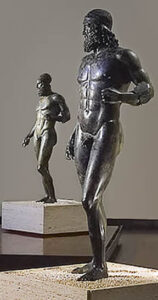 Reggio Calabria is a very important Italian museum. Its finest collections of archaeological finds and excavations date from Magna Graecia. The museum’s exhibits include terracotta statues, weapons, ceramics, and paintings with bas-relief depictions, architectural fragments, hand-decorated vases and artifacts telling the story of the daily life of their period in history. One room is dedicated to the Old and Young Riace Bronzes and the treasures of the Porticello wreck found in its inlets. There are also exhibits showcasing the excavations of a Hellenist Necropolis discovered during its construction. Some of its spaces are now dedicated to temporary exhibitions promoting the local cultural heritage.
Reggio Calabria is a very important Italian museum. Its finest collections of archaeological finds and excavations date from Magna Graecia. The museum’s exhibits include terracotta statues, weapons, ceramics, and paintings with bas-relief depictions, architectural fragments, hand-decorated vases and artifacts telling the story of the daily life of their period in history. One room is dedicated to the Old and Young Riace Bronzes and the treasures of the Porticello wreck found in its inlets. There are also exhibits showcasing the excavations of a Hellenist Necropolis discovered during its construction. Some of its spaces are now dedicated to temporary exhibitions promoting the local cultural heritage.
Piedigrotta
Piedigrotta Church , dated around the early 17th century, is described in legend and folklore. The legend describes a group of sailors, escaping a perilous storm at sea who took refuge in the caves along the coast of Pizzo. They prayed for safety and salvation. In gratitude, they built a small shrine inside the caves, and dedicated to the Madonna.
Upon entering, one senses the crashing waves and the salty sea breeze. Inside there are a series of connected caves filled with intricate statues and carvings sculpted from the rocky walls of the cave itself. The figures show characters from the bible, religious scenes and symbols of faith.
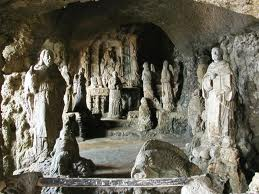
Castello Ruffo di Scilla
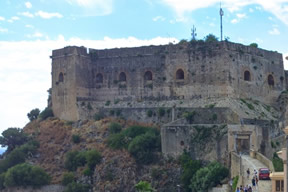
Fortifications like this one in Calabria are generally seen in the Saracen invasion period. The Castello Ruffo di Scilla has an ancient past: it was first used by the Etruscans, after that as a defensive fortress during the Magna Graecia period. The Romans expanded the fortress and settled in it. In the 9th century it became the Monastery of San Pancrazio which also served as a defense fortress against the Saracens.
Around 1060, it became a military installation. The castle was purchased by Paolo Ruffo in 1533 and became his family’s residence until the 18th century. During their residence there, the Ruffo family restored the castle and hung their coat of arms on the entrance portal. After crossing the bridge, the vaulted entrance, the courtyard and external staircase leads to the Ruffo residence for visitation. In 1808 it was taken over by the state. The building is not only beautiful, but it rises on a high mountain overlooking the sea, also dividing Scilla into two harbors: Maria Grande and Chianalea.
Parco Villa Vittoria
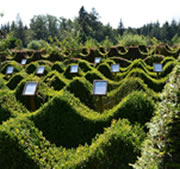 The Villa Vittoria park is a property managed by the State ForestryCorps in Mongiana in Calabria until 2016 when the body merged with the Carabinieri .Entrance to the park is free, but requires a reservation.
The Villa Vittoria park is a property managed by the State ForestryCorps in Mongiana in Calabria until 2016 when the body merged with the Carabinieri .Entrance to the park is free, but requires a reservation.
The Villa Vittoria Multipurpose Park, part of the “Marchesale” Biogenetic Nature Reserve, was acquired in 1914 as part of a medieval fief owned by the Marchioness Caracciolo Imperiale di Arena. One of the main attractions of the Reserve are the natural fir trees as well as the ponds and an undergrowth rich in shrubs that are magnificiently manicured. Other small animals such as foxes, hedgehogs, weasels and other small rodent mammals live in this protected habitat.
Among the species of avifauna, in addition to the common buzzards and jays, there are also specimens of green woodpeckers, owls, owls and different species of falcons. The Park has a particularly interesting historical, cultural and naturalistic context a short distance from the Certosa di Serra San Bruno, the Weapons Factory and the Bourbon Ironworks of Mongiana and Ferdinandea.
Cattolica di Stilo

The Cattolica of Stilo is located on the slopes of Mount Consolino in Stilo in the southern most province of Reggio Calabria. It is a small Byzantine central plan church, square in shape, built with brick masonry. The roof is made up of five small, very characteristic domes. One of the most important Byzantine museum centers in Calabria, its construction dates back to between the 9th and 10th centuries, before the Norman conquest. It has been restored many times since then and numerous works of art have been reevaluated. The fresco of the Dormitio Virginis painted in 1552: together with the sixteenth-century bronze bell and the small granite stoup, bear witness to the change from the Byzantine rite to the Latin rite.
On the following 9 December, Elia Fiorenza, the scholar of Byzantine and medieval Calabria , revealed that, through photogrammometric analyses, a new inscription in a very poor state of preservation which makes use of many abbreviations and which the scholar dated to the 15th century .
Island of Dino
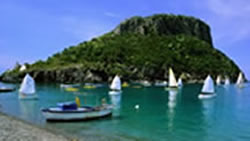 Dino Island was once connected to the mainland by a landbridge which was washed away by erosion. The island is located on the southern Calabrian coast near Praia a Mare.
Dino Island was once connected to the mainland by a landbridge which was washed away by erosion. The island is located on the southern Calabrian coast near Praia a Mare.
Dino Island was of interest to pirates who stopped there as well as Islamic and Ottoman ships which frequented the land. A tower was later built there by the Normans and subsequently used by the Kingdom of Naples. A british steamer, the Umballa was sunk there by a German submarine during WWI.
The island is full of natural beauty sporting cliffs over 260 feet high. There are many natural grottos below and above sea level. Visiting the grottos filled with beautiful light blue water reveal stalagmites and other fish fauna. The Gargiulo Grotto is the most interesting, but is accessible only to experienced divers as it opens 60 feet below sea level.
Castello Aragonese di Le Castella
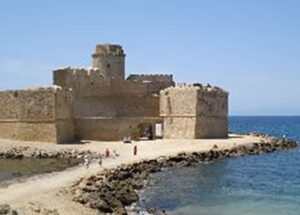 The Castello Aragonese di Le Castella is one of the most fascinating castles in all of Italy due to its location on a small islet attached to the coast by a small strip of land. The castle which was built in the 15th century was not a royal residence, but rather a shelter for soldiers fighting against attackers from the sea.
The Castello Aragonese di Le Castella is one of the most fascinating castles in all of Italy due to its location on a small islet attached to the coast by a small strip of land. The castle which was built in the 15th century was not a royal residence, but rather a shelter for soldiers fighting against attackers from the sea.
Its foundations date back to the Magno-Greek era or about 400BC. The Romans used it as a refuge as they were retreating from Hannibal. The Normans, Sabians, Byzantines, Angevins and Aragonese all had a hand in its construction.
The Turks continuously attacked the fortress as long as it remained populated until the 19th century when the inhabitants moved to the mainland.
The castle fortress is mostly restored and contains an ancient village; the remains of a small Church and chapel, the bastions and the tower which dates from the 13th century.
Castello di Santa Severina
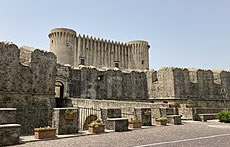 The castle is also called Carafa and is located in the town of Santa Severina, a medieval borgo located in the province of Crotone in between the Ionian Sea and the Sila plateau. It is an important archeological museum overlooking the Neto river valley. It dates back to the Norman era and it is still possible to see the labyrinths and stables. Inside there are medieval frescoes and marvelous stucco work along with baroque paintings by Francesco Giordano decorating the living quarters of the castle.
The castle is also called Carafa and is located in the town of Santa Severina, a medieval borgo located in the province of Crotone in between the Ionian Sea and the Sila plateau. It is an important archeological museum overlooking the Neto river valley. It dates back to the Norman era and it is still possible to see the labyrinths and stables. Inside there are medieval frescoes and marvelous stucco work along with baroque paintings by Francesco Giordano decorating the living quarters of the castle.
Considered to be one of the most complex and wonderfully preserved military fortresses in Calabria, boasting a 15th century square watch tower, along with four angular towers on four protruding buttresses. In 1535, Galeotto Carafa built the observation area which overlooks the entire Marchesato as far as Crotone and the Ionian Sea.
![]() Calabria is more or less an undiscovered treasure offering pristine beaches on three sides, vast woodlands and lakes, mountains and nature reserves to discover. Calabria has a compelling history and culture including influences from ancient Greece, Bourbon Spain and France. Below are some of its outstanding and original activities:
Calabria is more or less an undiscovered treasure offering pristine beaches on three sides, vast woodlands and lakes, mountains and nature reserves to discover. Calabria has a compelling history and culture including influences from ancient Greece, Bourbon Spain and France. Below are some of its outstanding and original activities:
Beaches
Of course some of Italy’s most beautiful beaches are located in Calabria. La Costa degli Dei (The Coast of the God’s) on the Tyrrhenian Sea and Ionian Sea including the beaches of Tropea, Ricadi, Capo Vaticano, Grotticelle, Praia di Fuoco, Capo Cozzo, Spiaggia di Scilla, Spiaggia del Tono, Spiagge di Pizzo, Spiaggia di Riace (right), Spiaggia Santa Maria, and so many more. A day at the beach is always fun!
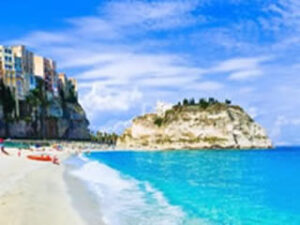
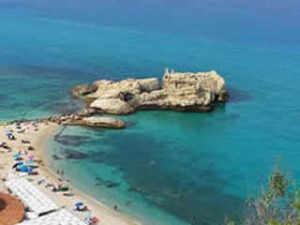
Tropea Beach Riaci Beach
Capo Vaticano Lighthouse (Il Faro)
From this magnificent, active lighthouse built in 1885 on the cape known as Capo Vaticano, one can walk along the edge of the cliffs overlooking the seaside to experience fantastic views of the se and beaches below. Operated by the Marina Militare, the lighthouse is 354 meters above sea level and its light is visible for 28 miles. Visitors can climb to the top to enjoy the remarkable views of the sea coast. There are guided tours available.
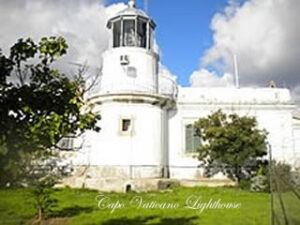
Pollino National Park
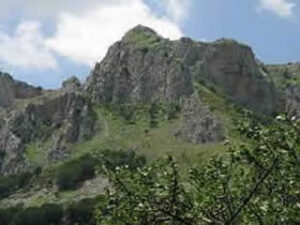
Pollino Park
The park covers 1,925 square kilometers (1,196 miles) highlighted by unique plants (Europe’s oldest tree Heldreich’s pine 1,230 years old) is located here. Formed by the Pollino and Orsomarso Massifs, Pollino encompasses part of the southern Appenines boasting the highest peaks in southern Italy. It also contains rivers and lakes marking the landscape with deep gorges and wide valleys making it ideal for sports activities. Additionally there are breathtaking views from on high.
It is home to many animal species as well as panoramic and historic mountain towns, about 56 municipaities. Among the most prominent and beautiful are Morano Calabro, Castrovillari, Rotonda and Cerchiara. They are worth a visit.
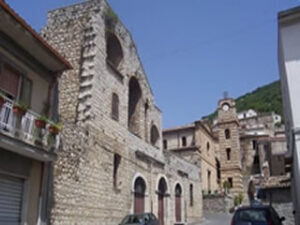
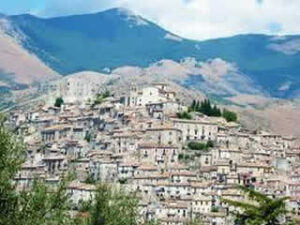
Cerchiara Center City Morano Calabro
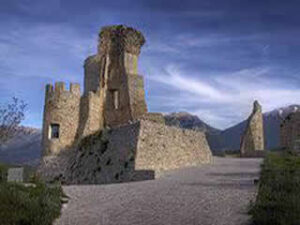
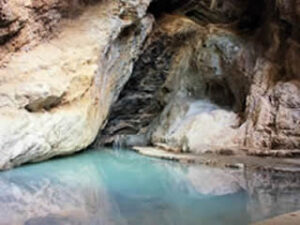
Morano Calabro Castle Ninfe Grotto, Cerchiara
Explore the Ranganello Nature Reserve where one can walk along the Ranganello canyon, its valleys, gorges and streams with multicolored rocks, flora and fauna. In the Raganello Gorge every year hundreds of hikers and fans of extreme sports, such as canyoning and rafting, visit this reserve to enjoy a place that allows them to enjoy moments of pure adrenaline.
Sailing in Vibo Valentia
Calabia’s coastline allows for extensive sailing opportunities from April to October in ports like Tropea, Cretraro, Reggio and , Crotone and Vibo Valentia, the capital of the province of Vibo Valentia, which is among the best ports in Italy with facilities for 90 yachts, dock areas with large concrete jetties for all types of boats.
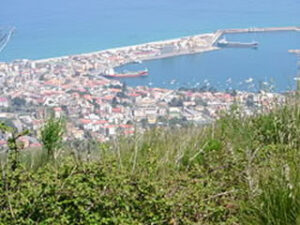
Boats can be rented or chartered for a large group. There are also boat tours around Capo Vaticano or to the Aeolian islands including Lipari, Vulcano, Panarea and Stromboli, as well as ferry connections to the Aeolian Islands and Sicily.
Classical Sites along the Ionian Sea
Calabria’s culture originally descended from ancient Greece who settled along the Ionian Sea coast of Calabria.There are numerous archeological sites and museums to visit containing amphitheaters, temples, houses mosaics and local coinage including the towns of Locri, Caulonia and Scylletium. A little further north is Crotone, a city famous in Europe for Doctors, Olympic athletes and the mathematician, Pythagoras. It was founded in 710B.C. by the Acheans and originally known as Kroton.
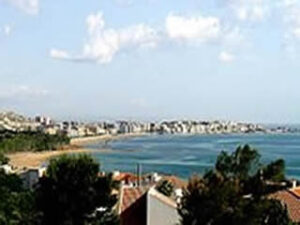
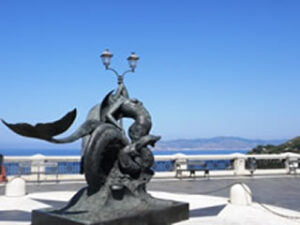
Crotone Beach Dolphin along Crotone promenade
Locri boasts a theatre that was built in the 4th century BC near the ancient city and had space for more than 4,500 people; only part of the theatre (below left) is visible today.
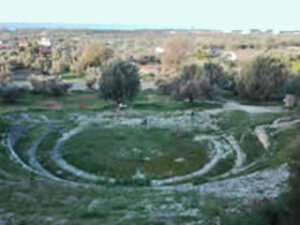
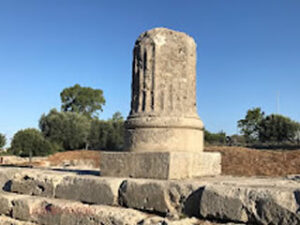
Locri Theater Locri Ruins
The Archeological Park of Locri Epizefiri along the Ioanian coast is just a few miles south of the town of Locri. It contains what remains of the ancient Greek city including its walls, theatre, homes, sanctuaries and numerous testimonies from the Roman period chronicling 4000 years of history.
Caulonia is an ancient town with a wonderful medieval center with many interesting buildings to review; winding its way through a labyrinth of characteristic alleys called vinedi, one can still see the medieval borders of the town. There is the town of Caulonia superiore which winds its way down the mountain to the magnificent beaches of the Ionian sea, ideal for diving and searching for archeological treasures visible in the crystal clear waters.
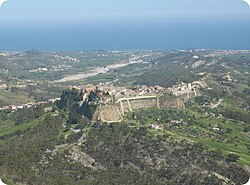
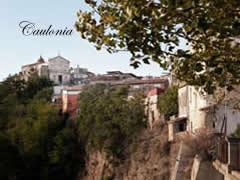
Caulonia Hilltop Town
Skiing at Lorica in the Sila Mountains in Winter
Lorica, is the Pearl of Sila favored as a winter destination for skiing in Calabria. It boasts several hotels in walking distance of the slopes and various ski lifts allowing return to the snowy slopes. At Botte Donato Cestovia, about 2 miles from Lorica, there is one of the highest peaks in Sila National Park at 1928 meters offering two slopes: the blue slope 3300 meters for all, and the 1000 meter red slope for expert skiers. Lorica also offers a 1,000 meter artificial bobsled track.
There is also the nearby Valle Inferno slope in the Cadicola di Coppa area. At 1500 meters, you can experience cross country skiing on 3, 5, and 7 kilometer trails in the Centro Fondo Carlo Magno area.
In addition to these areas, Gambarie in the Aspromonte National Park area is one of the most exciting ski areas in Calabria. From mountain tops you can see the crystal clear Strait of Messina with the snow-white mountains behind you. Located 20 minutes from Reggio Calabria, Gambarie is about 50 minutes from Messina.
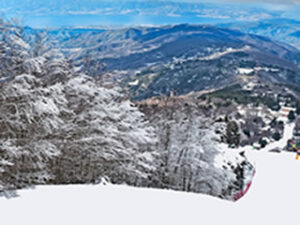
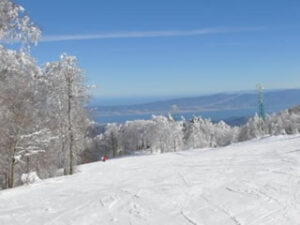
Ski Trails at Gambarie
Snorkling/Diving at Arco Magno
The Arco Magno beach is a beautiful natural landmark formed over time by the sea eroding the natural coastline. It is located off the coast of Dino Island and can be reached by boat or by foot via a steep trail from which one can experience breath taking views of the surrounding beaches. The area around this fantastic beach is ideal for snorkeling or diving.
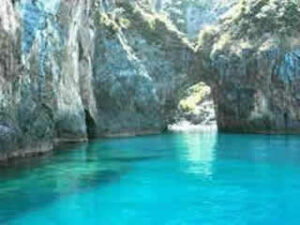
ArcoMagno
Visit Stromboli and the Aeolian Islands
Off the coast of northern Sicily in the Tyrrhenian sea, one finds the island of Stromboli containing one of the four active volcanoes in Italy. It is one of seven islands, sometimes called the Lipari islands and said to be named after Aeolus, the mythical ruler of the winds in Greek Mythology. The islands are Lipari, Vulcano, Salina, Stomboli, Filicudi, Alicudi and Panarea.
These islands are accessible by ferry from Naples all year round, and from Reggio Calabria and Vibo Valentia in the summer.
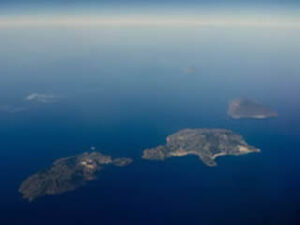
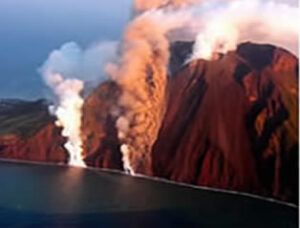
Aeolian Islands Stromboli
Stroll along the Lungomare Falcomata
This waterfront “passagiata” is considered one of the most beautiful promenades in Italy. Located along the coast in Reggio Calabria, it sports breath taking views of the sea and the Strait of Messina. It was named for a previous mayor, Italo Falcomata`, an originator and supporter of the Primavera di Reggio (Spring of Reggio) or the rebirth of the city in the 90’s.
Along the walkway, one can enjoy numerous trees and greenery, restaurants, cafes and explore monuments including the Monumento ai Caduti di Reggio Calabria and Scoglio della Fata Morgana. There is also an amphitheater Areno dello Stretto providing a panoramic view of the strait and the island of Sicily.
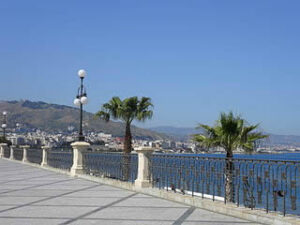
LungoMare Falcomata
There are so many other things to do in Calabria. They are too numerous to mention.
